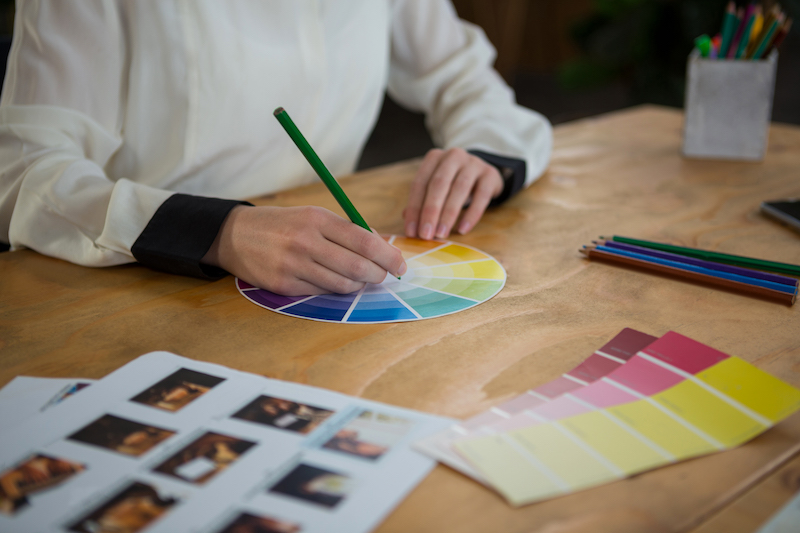The Spanish word for colour, or color if you live in the United States, is color. Both words can be traced back to the Latin color.
Latin American Pronunciation
European Spanish Pronunciation

Color is a masculine noun, so it takes the following definite and indefinite articles:
- el color = the colour
- los colores = the colours
- un color = a colour
- unos colores = some colours
The seven most commonly cited colours of the rainbow (colores del arcoíris), as defined by Isaac Newton, are as follows:
- rojo = red
- naranja = orange
- amarillo = yellow
- verde = green
- azul = blue
- índigo = indigo
- violeta = violet (or morado = purple)
Hay siete colores en un arcoíris.
There are seven colours in a rainbow.
By extension, color can also refer to substances used for painting.
El artista está mezclando los diferentes colores.
The artist is mixing the different colours.

The expression dar color (literally “to give colour”) can mean a few things in Spanish, including to paint, to colour and, figuratively speaking, to liven up.
Ellos tienen que dar color a la pared.
They have to paint the wall.
A color (in colour) is often used to describe media available in colour, such as televisión a color (colour television), película a color (colour film), or fotos a color (colour photographs).
The expression “de color” (literally “of colour”) was used in the past to refer to people of African descent or with dark-coloured skin, but its usage has decreased over time due to its historically and racially charged connotation. However, it’s still used to refer to things that are coloured.
¿Cómo se lava la ropa de color?
How do you wash coloured clothes?
Color is often used to refer to the coloration of a person’s face as a reflection of their physical or emotional state. For example, tener buen color means to have good colour while tener mal color means to look off colour. You’ll also hear idiomatic expressions such as:
- sacar los colores a alguien = to make someone blush
- ponerse de mil colores = to go bright red
- mudar de color = to go white

It can also denote a person’s tone of voice (color de voz).
A few useful words related to color include the verb colorear (to colour, to dye, to embellish), the adjectives colorado (red-faced / red-coloured) and coloreado (coloured), and the noun colorido (colouring). Interestingly, the word for blush/rouge or lipstick in Spanish is colorete.
To conclude, let’s take a quick look at some common colour terms in Spanish:
- color primario = primary colours
- color secundario = secondary colour
- color complementario = complimentary colour
- a todo color = in full colour
- subida de color = risqué
- impresión a color = colour copy
Idiomatic expressions featuring ‘color’
Verlo todo de color de rosa
English meaning: to see life through rose-coloured spectacles
Literal translation: to see everything in rose colour
No haber color
English meaning: to be no comparison
Literal translation: there is no colour
De color de rosa
English meaning: all peaches and cream, a bed of roses
Literal translation: rose-colored
Ponerse color de hormiga
English meaning: to go pear-shaped, take an ugly turn
Literal translation: to turn ant-colored
Todo es según el color del cristal con que se mira
English meaning: it’s all a matter of perspective
Literal translation: everything is according to the colour of the lens through which it is viewed

